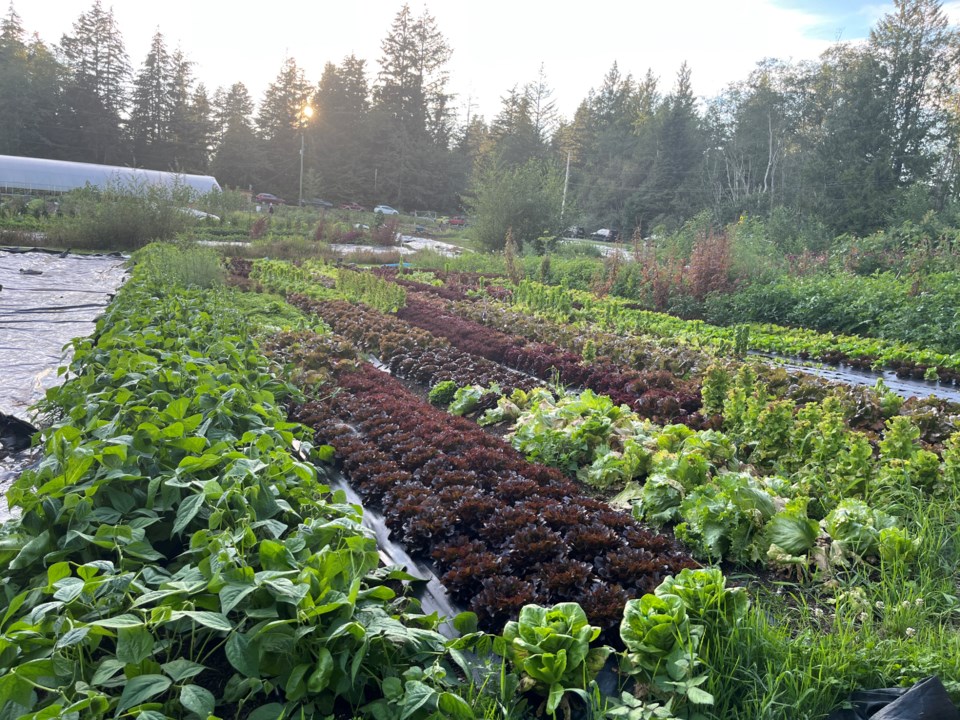For those concerned about pesticide use in conventional farming methods and its impacts on human health and the environment, the annual Environmental Working Group (EWG) shopper's guide to pesticides in produce titled, the Dirty Dozen and Clean Fifteen, is an easy way to understand the risks.
In the qathet region, Coming Home Farm and Blueberry Commons in Wildwood are both certified organic. There are also many backyard gardeners in the region, but some folks may not have the ability or the right environment to grow, so the guide can come in handy when trying to avoid food grown with herbicides and insecticides.
Peg Campbell, who lives in Okeover, said she tries to buy organic when she can and especially tries to follow the dirty dozen list.
"Easy to do in the summer with all our wonderful local farmers and fresh produce,” said Campbell. “Harder in the winter, especially now trying to avoid buying American produce."
Although the guide is based on fruit and vegetables tested on farms in the USA, the information can be relevant to residents in BC and Canada, since, according to Canada Food Flows, an interactive website developed by UBC researchers, US states supply 67 per cent of Canada’s vegetable imports and 36 per cent of fruit imports.
According to an EWG media release from June 11, almost 60 per cent of samples of conventionally grown fruit and vegetables on the Clean Fifteen list had no detectable pesticide residues. Conversely, more than nine in 10 samples of conventional, or non-organic produce on the guide’s dirty dozen list, contained residues of potentially harmful pesticides.
New on the list for a high amount of pesticide residue are potatoes and blackberries.
According to the release, the information is based on the USDA’s first-time tests of blackberries, which found 93 per cent of samples had pesticide residues, for an average of four different pesticides per sample. The pesticide cypermethrin, classified as a possible human carcinogen by the US Environmental Protection Agency, was detected on just over half of conventional blackberry samples.
For potatoes, new USDA data revealed that 90 per cent of samples contained chlorpropham, a sprout inhibitor used post-harvest. The European Union banned use of the chemical in 2019 due to health concerns for both farmers and consumers.
The EWG looks at USDA data to review pesticide residues on many popular fruits and vegetables. These 12 fruits and vegetables had the highest amount of pesticide residues detected, according to USDA data: spinach, strawberries, kale, grapes, peaches, cherries, nectarines, pears, apples, blackberries and potatoes.
These 12 items had the lowest amounts of pesticide residues, according to EWG’s analysis of the most recent USDA data: sweet corn, avocados, papaya, onion, asparagus, cabbage, watermelon, cauliflower, bananas, mangoes, pineapple and kiwi.
Luckily in BC, in the summer, folks can find peaches, cherries, blackberries and locally grown fruits and vegetables quite easily.
"I was glad to see potatoes on the dirty dozen as organic just tastes better, and I want to support organic farming," said Campbell. "I was relieved to see cauliflower on [Clean Fifteen] due to the price of organic, and how brown spotted they look in our stores in the winter."
Join the Peak’s email list for the top headlines right in your inbox Monday to Friday.




